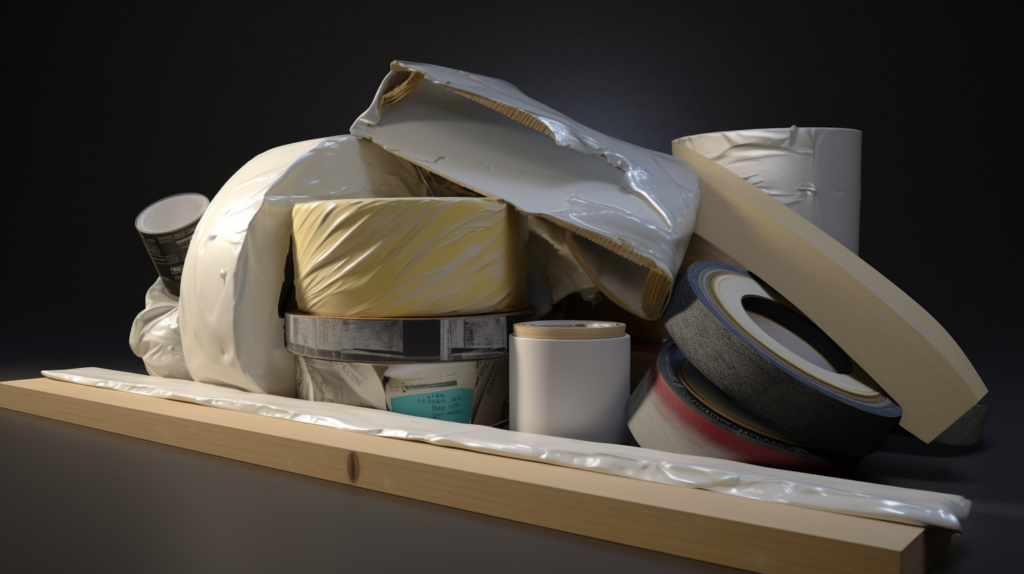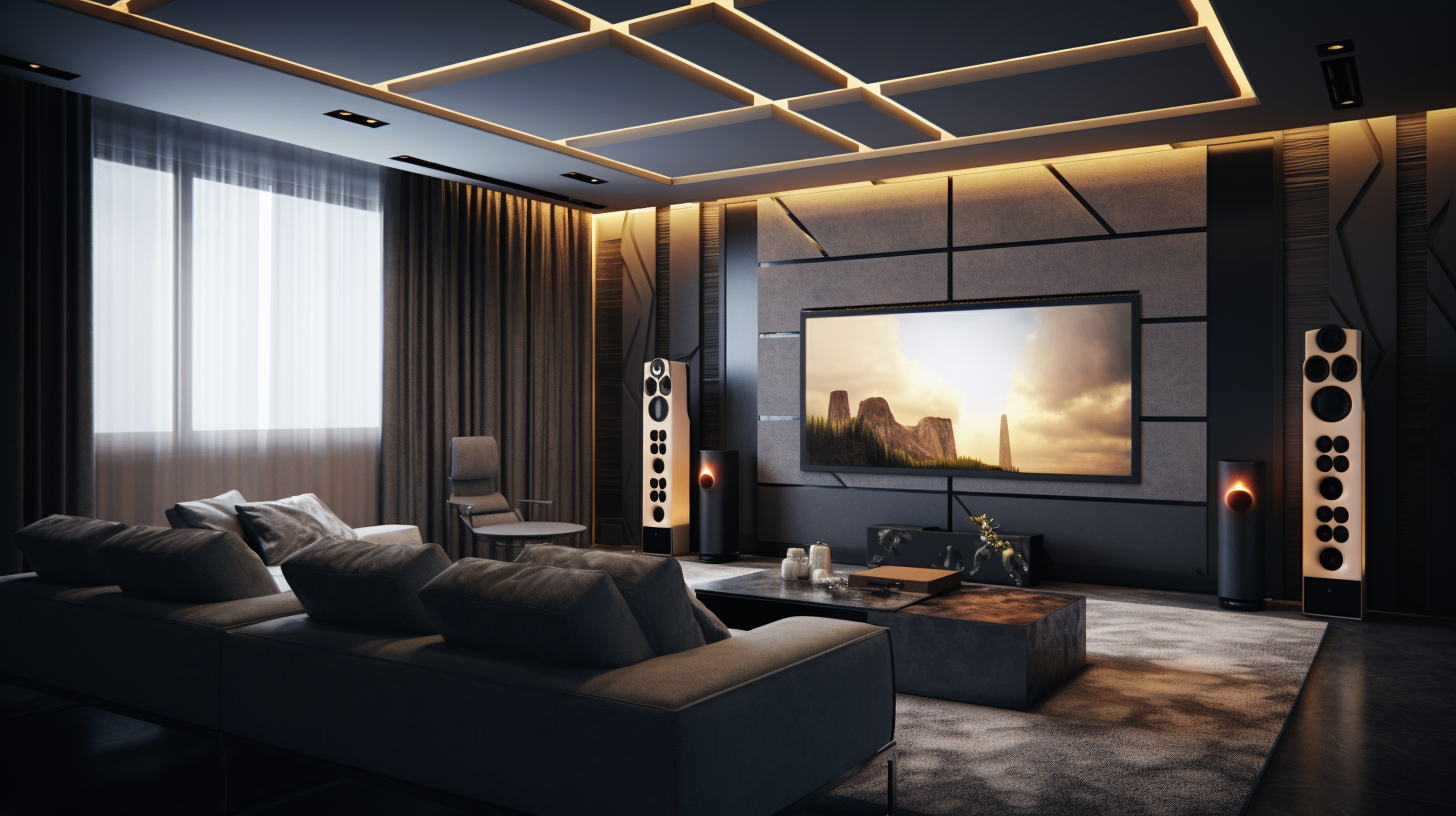Do you cringe every time a loud explosion goes off in a movie, worried the windows might shake loose? Bass sounds can easily travel through walls and floors, disrupting your neighbors.
With the right soundproofing techniques and materials, you can contain that low frequency rumble and enjoy your home theater system without restraint.
Let’s dive in to the key steps for soundproofing bass in your media room or home theater…
Why Soundproofing Bass and Low Frequencies is Important

Bass and low frequency sounds have a tendency to easily travel through walls, floors, and ceilings more so than higher frequency sounds.
The longer wavelengths and lower frequencies of bass can move through building structures with less resistance compared to mid or high range frequencies.
This can become an issue when listening to music, watching movies, or making other kinds of noise in your home.
The thumping bass from a stereo system or home theater can transfer through the very structure of a home and disturb neighbors in adjoining apartments or condominiums.
The vibrations caused by heavy bass can travel through framing, along pipes, within flooring materials, and even through electrical outlets and HVAC vents.
This allows it to bother other members of your household who are trying to sleep or focus on tasks in different rooms.
Low rumbles and vibrations are quite difficult to cover up or mask sufficiently with other ambient sounds like fans or white noise machines.
Specific techniques and materials are required to effectively block lower frequency noise transmissions through ceilings, walls, and floors.
Understanding the importance of containing bass and low frequency noises will help motivate you to properly soundproof your space.
Taking the time to implement good soundproofing for rooms like home theater media rooms allows you to enjoy your audio system without reservations and avoid tension or complaints from neighbors in adjoining units.
It provides good noise insulation for everyone involved so you can avoid turning down the volume excessively or stopping the fun entirely when watching an action movie or blasting music.
Proper sound isolation through structure borne and airborne bass blocking gives peace of mind that you are not disturbing others in the vicinity while still maintaining high quality audio reproduction and listening enjoyment.
Materials Needed for Soundproofing Against Bass

To effectively block the transfer of bass frequencies between rooms and dwellings, you need the right combination of specialized materials for sound absorption and containment. The optimal choices include:
Mass Loaded Vinyl
Mass loaded vinyl (MLV) is a dense, heavyweight vinyl material designed with soundproofing specifically in mind.
The limp mass vinyl sheet contains barium salts or other mineral fillers that give it a significantly higher density compared to standard vinyl.
This allows it to impede the transfer of low frequency vibrations much more effectively than normal, lightweight vinyl.
MLV works well as an acoustic barrier on walls and ceilings when properly installed as a decoupled layer.
The material can limit and constrain the passage of lower frequency sound waves.
MLV should not be rigidly attached to the main structure but rather allowed to hang freely using a clips or channels so it can work optimally.
Green Glue
Green glue is a viscoelastic polymer-based soundproofing compound that is applied between layers of drywall or other rigid surfaces.
It is a constrained layer damper that helps absorb acoustic energy and vibration rather than transmitting it through the building structure.
The viscous nature of green glue converts audible sound waves into subtle heat energy rather than allowing it to pass through the wall or ceiling.
It can dampen sound transmission, especially lower frequencies, by up to 80% when sandwiched between two rigid layers such as drywall or plywood.
The noise reducing performance is enhanced substantially when green glue is combined strategically with other soundproofing methods like double walls or floating walls.
Double Drywall
Using an extra layer of drywall greatly helps with blocking airborne sound transmission between rooms.
The additional mass and limpness provided by double drywall installation is highly effective at reducing noise from home theaters, stereo systems, and other loud sources before it transfers to other areas of the home.
Carefully staggering the drywall sheet seams and joints between layers and using sound dampening green glue provides maximum sound containment performance.
The dual drywall layers with offset seams contain noise within the room much better than a single layer.
Insulation
Sound absorbing insulation materials like fiberglass and rockwool batts or rigid boards can help absorb and dissipate acoustic energy rather than allowing it to transmit freely through walls, ceilings and floors.
They provide substantial noise control by reducing reverberation of sound waves within the cavities.
Choose insulation products with exceptionally high density levels and noise reduction coefficient (NRC) ratings to most effectively absorb lower frequency sounds.
The density slows sound transmission while the high NRC indicates strong sound absorption.
Bass Traps
Bass traps are acoustic panels made from rigid fiberglass or rockwool specifically designed to absorb low frequency sounds in the range produced by subwoofers and systems with heavy bass.
Carefully placing bass trap panels at room corners will help reduce reverberation and dissipate the acoustic energy from loud low frequency sources.
This prevents the low rumbles from amplifying in a room by containment and absorption, leading to reduced transmission through the actual structure.
Bass traps use corner placement and their sound absorbing properties to target the specific low frequencies that easily transfer through walls and ceilings.
Sealants
Applying caulk, weather stripping, door sweeps, and other sealants ensures gaps and openings are filled where unintended sound leakage occurs.
Air leaks or gaps in the soundproofing allow greater transmission of noise, especially low frequency vibrations.
Carefully sealing any penetrations, electrical outlets, vents, windows doors and trims with purpose-designed acoustic sealant limits potential passage points for bass to transfer out of a room.
Permanently sealing cracks, gaps, and incomplete isolation allows the other soundproofing treatments to work optimally.
Properly installing some combination of these specialized materials will greatly reduce the transmission of lower frequency bass noises to adjacent rooms or dwellings.
Strategically identifying and prioritizing weak points for noise leakage and using the most suitable products for each area will optimize the overall soundproofing efforts.
Key Steps for Bass Soundproofing

Completing your own soundproofing project focused on containing bass and low end frequencies can be accomplished through careful planning and execution of these key steps:
Isolate the Source
For dedicated home theater setups or other permanent heavy bass sound systems, isolate the subwoofer itself from the surrounding structure using an isolation pad or vibration damping platform.
This will limit transfer of vibrations from the source into walls, floors, and ceilings that could transmit the low frequency sounds throughout the building.
For heavy bass equipment like large high-powered subwoofers, consider a dense rubber isolation pad.
A sturdy plywood platform with layers and damping materials built in to decouple the source from the surrounding framing.
Preventing vibration transfer from powerful low frequency audio components is the first step.
Add Mass
Adding limp mass is one of the most effective standard DIY methods for blocking low frequency noise transmission.
Install an extra layer of drywall using green glue between the panels to dampen vibrations rather than transferring them through the drywall into structural elements.
Ideally, attach the panels to staggered studs or resilient channels rather than anchoring rigidly to the existing wall framing.
The floating wall method prevents coupling. Allow any added drywall layers to be decoupled rather than making rigid connections into the walls.
The extra mass impedes sound while the green glue absorbs acoustic energy instead of letting it become mechanical energy that easily transfers through the structure.
Absorb Sound
Strategically place bass traps, insulation, or other acoustic absorption materials in corners or along walls adjacent to the sound source.
This absorbs the reverberant low frequency energy rather than allowing it to migrate through the structure unchecked.
Prioritize room corners for maximum bass trapping effect since they amplify and build up low frequencies.
Dense fiberglass or rockwool insulation within the wall cavities also helps absorb noise. Leave an air gap behind the absorbing material layers to improve performance.
Absorbing and containing bass in the room prevents it from ever reaching walls, ceilings or floors where transmission can occur.
Seal The Gaps
Aggressively caulk and seal all potential air gaps in the room around outlets, windows, vents, trims, fixtures and any cable or pipe penetrations where leaks can occur.
Use acoustic sealant for permanent long term flexible sealing and fill larger gaps with backing material before caulking.
Weather strip doors and windows thoroughly and install door bottom sweeps to prevent sound leakage around openings.
Keeping the interior room airspace fully contained limits bass noise transmission paths into structural elements.
Avoiding any openings or cracks prevents sound energy escaping in any manner.
Decouple The Surfaces
Where feasible within accessibility and budget constraints, detach interior walls or ceilings from the exterior main framework or adjoining walls.
This prevents flanking noise by eliminating structure borne transfer through the building framing, greatly improving soundproofing between rooms and dwellings.
Use resilient channels and double stud walls with an air gap to decouple drywall from studs or joists.
A floating interior wall that is fully decoupled from the main structure and surrounding surfaces provides ideal sound containment. Limiting contact and vibration transfer is key.
Careful installation of damping, mass loaded barriers, absorptive insulation and very thorough sealing addresses the main airborne and structure borne bass noise issues before they occur.
Containing the sound and vibration from powerful subwoofers and full range speaker systems reduces the intensity of transmitted bass frequencies to nearby rooms or outside your home.
Well-planned techniques prevent low frequency noise transfer at the source.
Conclusion
Properly soundproofing against low bass frequencies requires the right materials, proper installation techniques, and often professional help.
But the payoff is huge – undisturbed movie watching and music listening without bothering neighbors. Implementing sound isolation gives freedom to enjoy your home theater and audio system fully.
With some diligence and these comprehensive steps, containing your heavy bass is achievable.
